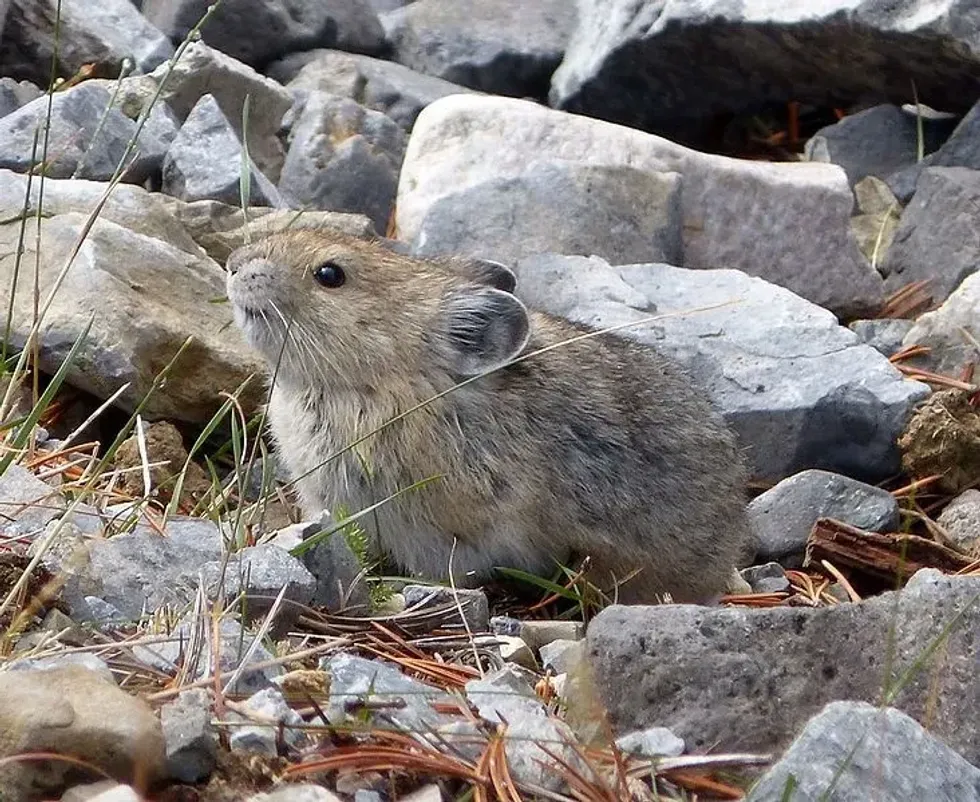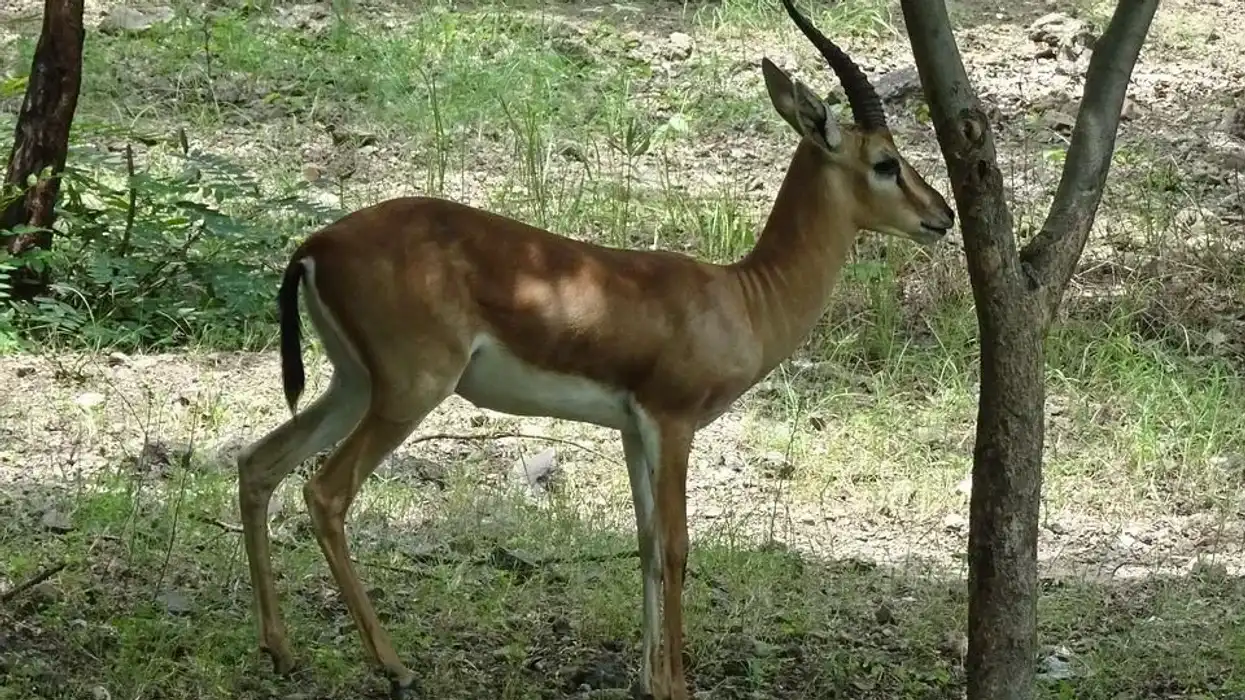The Collared Pika, Ochotona collaris, belongs to the family Ochotonidae and genus Ochotona.
They come from a family closely related to rabbits and hares but unlike hares and rabbits, Collared Pikas are noted to be active during the day as well. They are found in Central and Southern Alaska, Yukon, Canada, Northwest Territories of Mackenzie River, and Northern British Columbia.
This species is very similar to the North American Pika (Ochotona princeps) since the two species of pikas, Collared Pika and North American Pika, have descended from the same pika species.
The facts about Collared Pikas tell us that this species is very much affected by climate change. The climate change shifting toward hot temperatures is not favorable for Collared Pikas. Here are some interesting facts about the Collared Pika, after which you must check out our other articles on the American pika and brown hare as well.
Collared Pika Interesting Facts
What type of animal is a Collared Pika?
A Collared Pika (Ochotona collaris) is a pika. This species belongs to the order Lagomorpha. They are closely related to rabbits and hares. Both the males and females of this species look alike.
What class of animal does a Collared Pika belong to?
A Collared Pika (Ochotona collaris) belongs to the mammal class of animals. There are around 30 species of pika present in the wild but only two species of pika are found in North America.
How many Collared Pikas are there in the world?
The population density of Collared Pikas is 6.4-7.2 individuals per hectare in North America. Their population has decreased over the years due to habitat loss and climate change and is still decreasing.
Where does a Collared Pika live?
A Collared Pika lives in the woods. It likes to stay on talus slopes in Northern America. You can find them in such regions in Central and Southern Alaska, Yukon, and Canada.
What is a Collared Pika's habitat?
A Collared Pika lives in mountainous regions such as talus slopes. The Pika (Collared) prefer sites with abundant vegetation and boulder fields. This species uses large rocks from the boulder fields and rock slides to hide under during the day.
They need to hide because their body is not adapted to encounter too much heat. The males and females build their nests. These are extremely territorial animals.
Who do Collared Pikas live with?
Collared Pikas live on their own. Pikas are very territorial animals and do not like an intervention.
How long does a Collared Pika live?
A Collared Pika from order Lagomorpha can live up to seven years. They have a small lifespan but it is approximate with other species of their family.
How do they reproduce?
The breeding season of the Collared Pika is from May to June. They reach sexual maturity at the age of one year. Mating is done usually with neighboring pikas. The males visit all the female territories before the breeding season begins and try to attract them.
Babies are delivered in the female's territory. The Pika Collared are viviparous species. The gestation period is 30 days. The care of the juveniles is done only by the females.
What is their conservation status?
The conservation status of the Collared Pika is Least Concern. The decrease in their population trend is a serious concern for the future.
Collared Pika Fun Facts
What do Collared Pikas look like?
Collared Pikas look like small rabbits with round ears. Unlike the rabbit’s long, pointed ears Collared Pikas have short, round ears.
The hind limbs of the Collared Pika are not as long as rabbits and hares. Their upper side is grayish and the underside is white. They have gray patches on their shoulders, nape, and head which resemble a collar.
How cute are they?
Collared Pikas are extremely cute. They are like little furballs. They look adorable and have the appearance to enchant any human.
How do they communicate?
The Collared Pikas use vocalizations as a means of communication. They have sharp vocals. They use different vocals in different situations. Their common vocal sounds are like 'ank' or 'ink.'
They have a special 'kie' call for mating. They are loud species. Collared Pikas hunch their back like they are preparing for a jump when using a vocalization. At the same time, their noses are pointed upwards in the air.
How big is a Collared Pika?
A Collared Pika size is very small. They grow lengthwise between the range of 7-7.7 in. This species is at least two times bigger than a sparrow.
How fast can a Collared Pika run?
A Collared Pika can run as fast as 35 mph. They are excellent kickers which gives them a boost during running.
How much does a Collared Pika weigh?
A Collared Pika weighs in the range of 4.5-7 oz.
What are the male and female names of the species?
The males of the Collared Pika species are called bucks and the females of the Collared Pika species are called does.
What would you call a baby Collared Pika?
A baby Collared Pika is called a kitten.
What do they eat?
Collared Pikas usually have a herbivorous diet. But to maintain nutrition and balance in their diet, they sometimes eat dead birds. Their usual diet consists of leaves, stems, grasses, and stems of small shrubs.
Collared Pikas have a habit of storing their food under hay piles. They collect food during the whole summer season just to store them in their territory. When the winter arrives they feed on these storages.
Are they friendly?
No, Collared Pikas are very territorial animals. They do not like interactions with anyone besides the females of their species during the breeding season.
Would they make a good pet?
Collared Pikas are wild animals. Even with training, Collared Pika pet animals are not suitable for a household. This species becomes very aggressive when they reach sexual maturity. Also if the temperature of their surroundings gets too hot there is a very likely chance that they will die. Hence, they would not make good pets.
Did you know...
The hay piles of Collared Pikas are raided by other animals for food.
Collared Pikas eat their fecal pellets and also those of a few other species such as hoary marmots and ermine.
How does the Collared Pika defend itself?
Collared Pikas have a difficult time defending themselves. They are not gifted with any defense mechanisms. The only thing they can do to defend themselves is hide. They hide behind rocks and boulders when they sense danger, to save themselves. Their common predators are stoats, coyotes, eagles, martens, weasels, and foxes.
Comparisons with other pikas
Collared Pikas have a cream-colored fur patch on the facial gland whereas with American Pikas the fur patch is brown.
Here at Kidadl, we have carefully created lots of interesting family-friendly animal facts for everyone to discover! Learn more about some other mammals from our kangaroo interesting facts, and gerbil fun facts pages.
You can even occupy yourself at home by coloring in one of our Collared Pika coloring pages.










